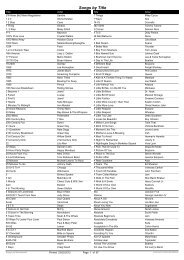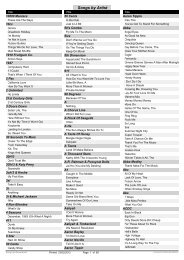Roderick W Rogers - members.westnet.com.au - Westnet
Roderick W Rogers - members.westnet.com.au - Westnet
Roderick W Rogers - members.westnet.com.au - Westnet
You also want an ePaper? Increase the reach of your titles
YUMPU automatically turns print PDFs into web optimized ePapers that Google loves.
Lichens of Subtropical Queensland R.W.<strong>Rogers</strong><br />
Lichens<br />
What is a Lichen?<br />
A lichen is <strong>com</strong>plex <strong>com</strong>munity having a fungus and a photobiont as its main <strong>com</strong>ponents.<br />
The photobiont (a green alga or a cyanobacterium) provides the energy source for the<br />
lichen and the fungus the structured habitat with its the absorptive and protective<br />
structures. Some cyanobacteria also provide the nitrogen for the lichen. Some lichens have<br />
both green algae and cyanobacteria in the one thallus, in this case the cyanobacteria are<br />
usually in structures called cephalodia.<br />
Lichens are capable of inhabiting extreme environments, and it may be true that a lichen<br />
can only survive in an environment that would support neither of the separate <strong>com</strong>ponents.<br />
The close mutuality of the lichen thallus may confer great stress tolerance on a lichen, but<br />
the delicate balance between the <strong>com</strong>ponents makes lichens very susceptible to damage.<br />
Lichens are generally intolerant of all but the most chemically infertile environments, and<br />
are therefore destroyed by air pollution.<br />
This delicate balance maintained by adversity means that lichens are usually extremely<br />
slow growing and very long lived. It is easy to destroy a decade of growth by carelessly<br />
walking on a lichen or collecting it. It may take several years for a new thallus to reach the<br />
size of a pinhead.<br />
Lichens <strong>com</strong>e in many shapes, sizes colours. The larger lichens, the shrubby and leafy<br />
lichens, are visually striking in many parts of subtropical Queensland. They occur on tree<br />
trunks and branches, on rocks and on soil. They occur in rainforests, in eucalypt<br />
woodlands and out into the driest parts of the state. Lichens are sensitive indicators of<br />
microclimate and of air quality.<br />
History<br />
The lichens of subtropical Queensland have been the subject of study for over one hundred<br />
years. John Shirley (an Inspector of Schools) published the first taxonomic account of the<br />
lichens of Queensland in 1888-89. Little more published information about Queensland<br />
lichens then appeared for about 80 years, when work on lichen biology was taken up in the<br />
University of Queensland. This was coincident with a burst of activity around the country.<br />
In the last thirty years Australian lichens have attracted attention within Australia and<br />
around the world. As a result we have seen the production of four lichen volumes in the<br />
Flora of Australia series, with several more yet to <strong>com</strong>e. Bec<strong>au</strong>se of this history, it is now<br />
possible to produce an account of the larger lichens in subtropical Queensland.<br />
The larger lichens, those that are shrubby (fruticose) and leafy (foliose) are the most<br />
obvious and the easiest to determine to species. The crustose lichens are still relatively<br />
poorly understood in Queensland, and their identification requires great patience,<br />
considerable skill and a good microscope. Identifying the shrubby and leafy lichens does<br />
require patience too, especially as the set of new terms that must be understood in<br />
6





